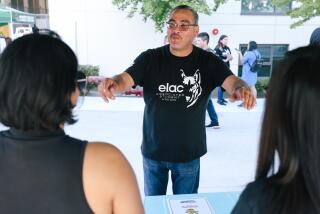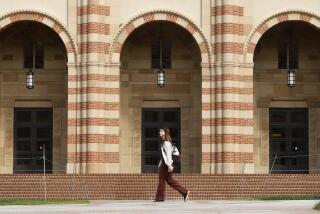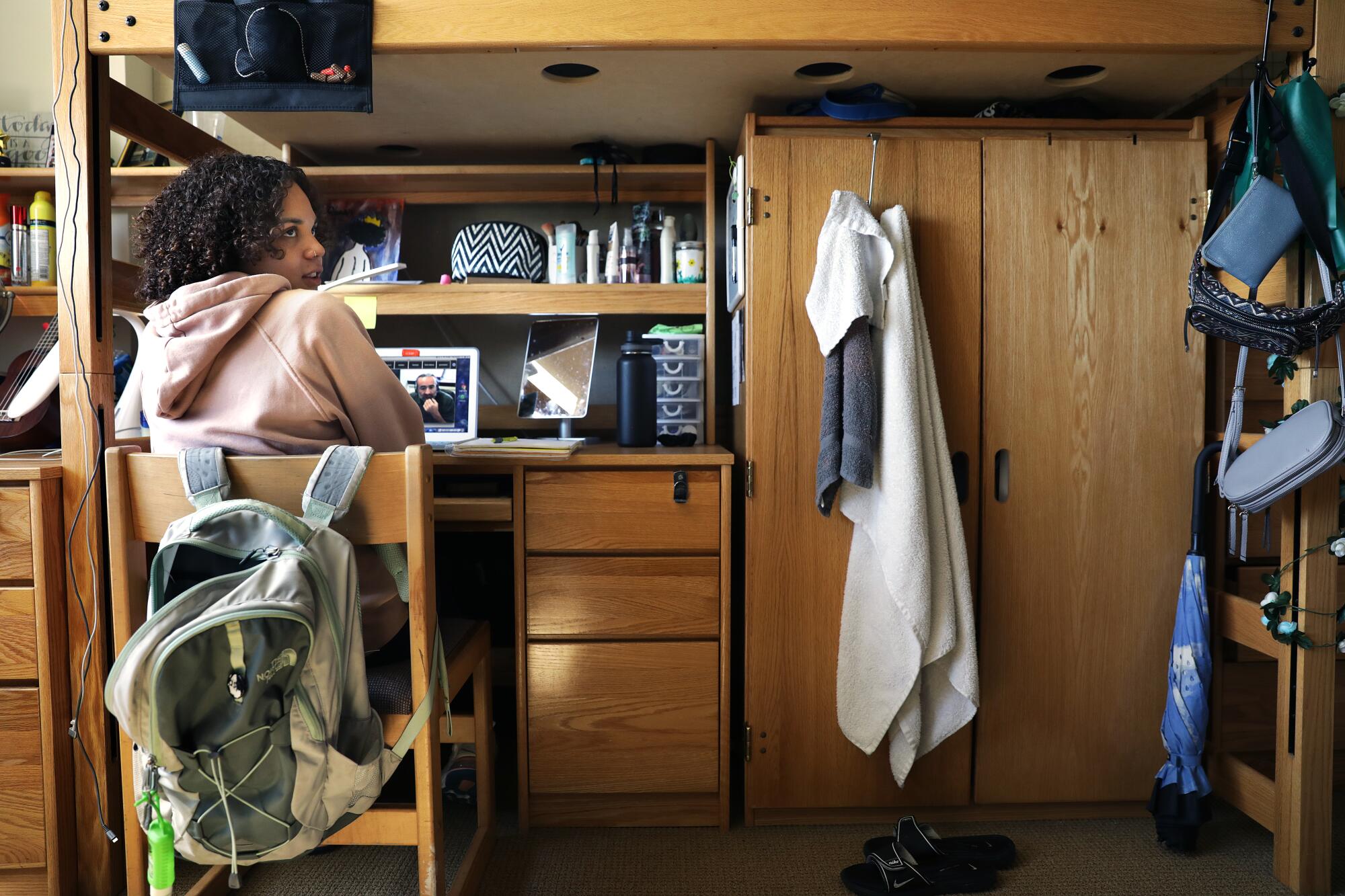
- Share via
USC junior Seth Krieger is a technological whiz who has built his own computer, landed a yearlong internship at the Jet Propulsion Laboratory and designed the power distribution box for his campus club’s racing car.
But on Wednesday — the first day that USC and other colleges and universities moved from in-person classes to online learning to guard against the novel coronavirus — there were a few awkward moments even for him.
Krieger, a 21-year-old electrical engineering major, logged into Zoom for a software engineering class easily enough. But he couldn’t ask questions because he couldn’t find the software feature to do so — and he thought it would be rude to unmute his computer and interrupt the lecture. After class, he figured out that a hand emoji might be the signal for questions.
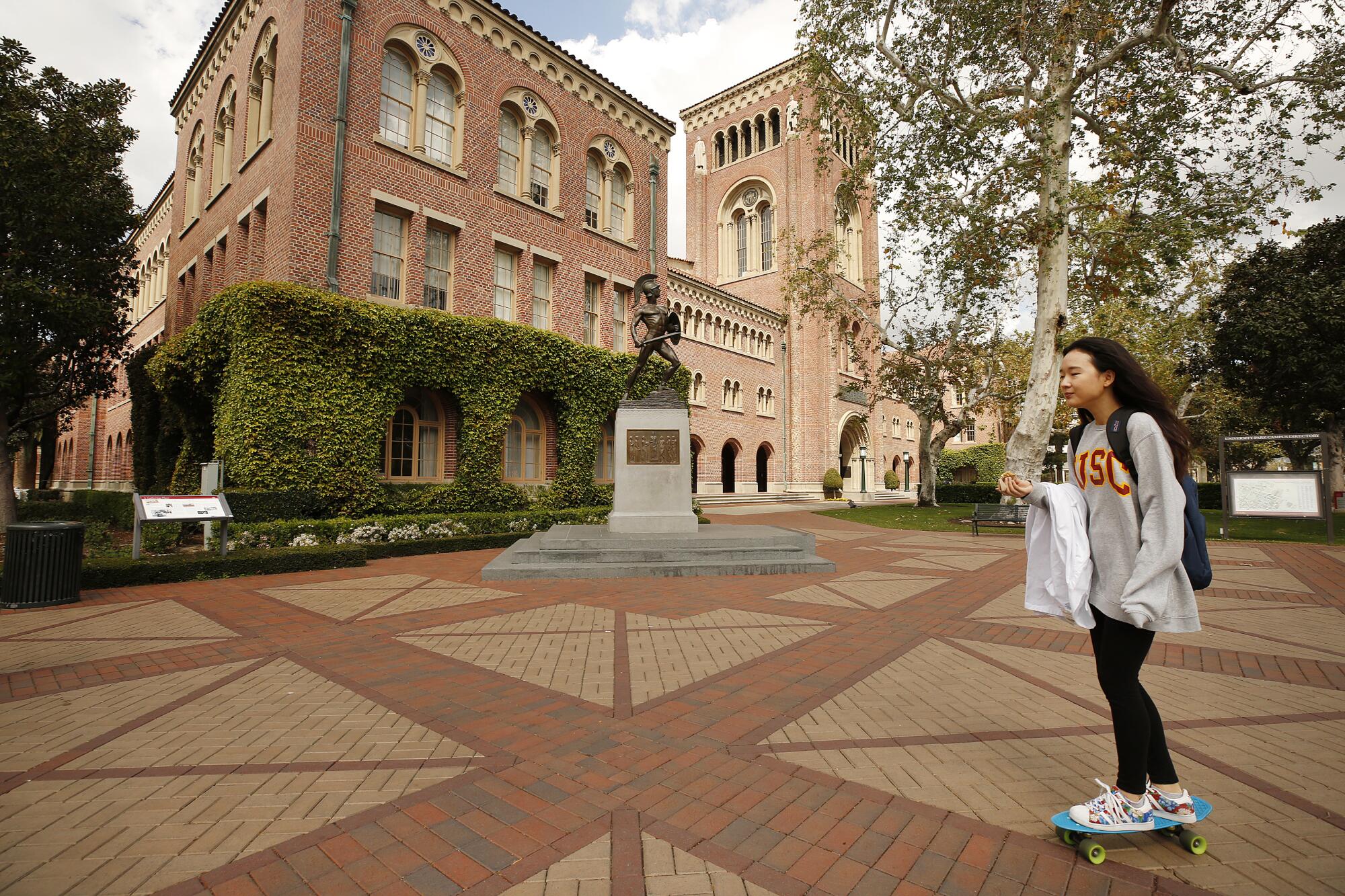
In his electromagnetics course, the professor usually demonstrates problem-solving by writing on paper projected on the wall. On Wednesday, however, she talked through the problems using a slideshow. That was harder to follow, Krieger said, because he likes to learn by watching others.
“It’s an adjustment — no one has done this before,” said Krieger, who supports the campus’ move to online learning. “But I figure there’ll be a rhythm that settles in and people will get the hang of it.”
As the coronavirus pandemic shuts down in-person classes on campuses throughout California and across the country, students and faculty at USC and UCLA sampled a taste of what could be the new normal in college life for weeks to come.
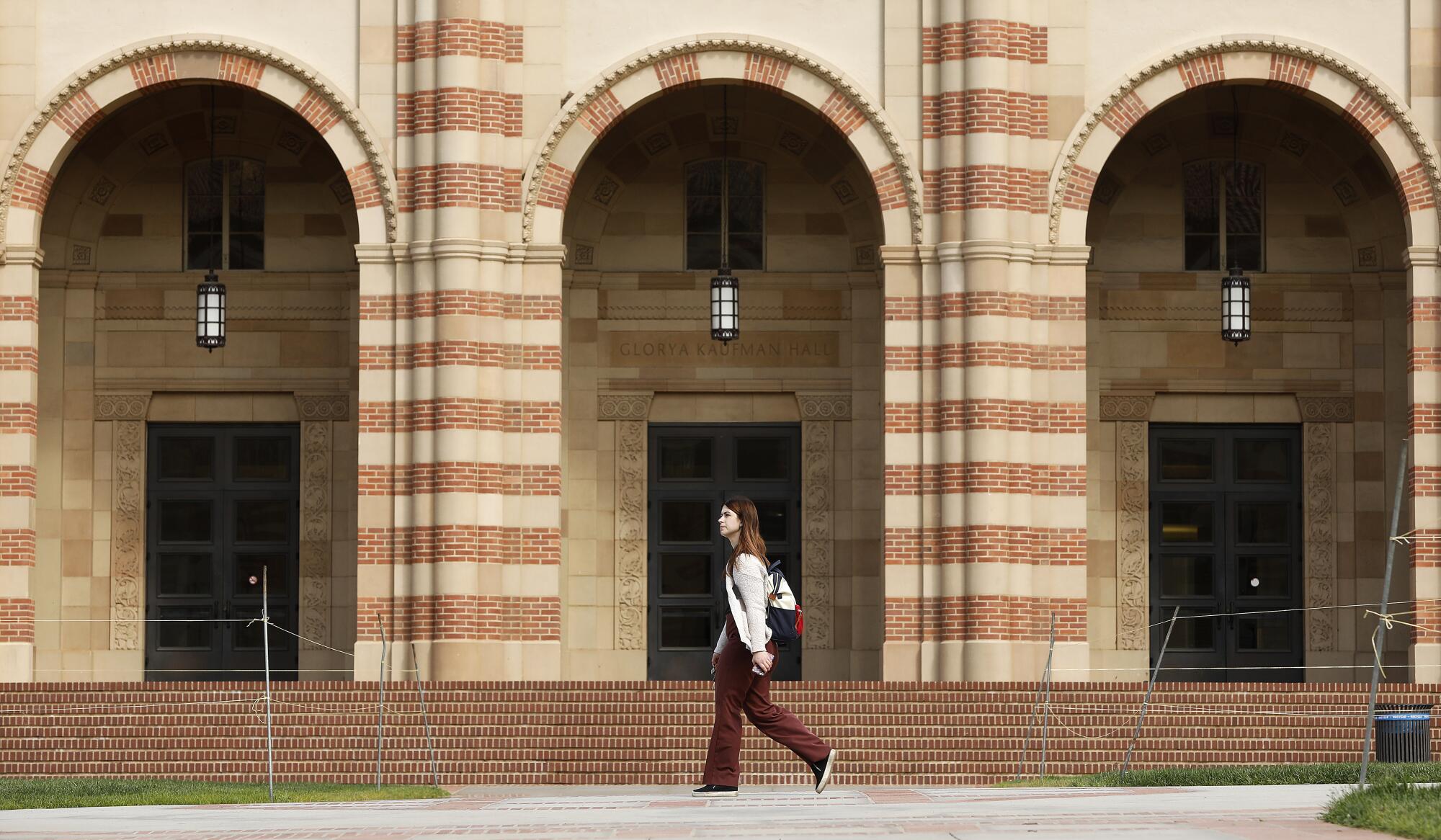
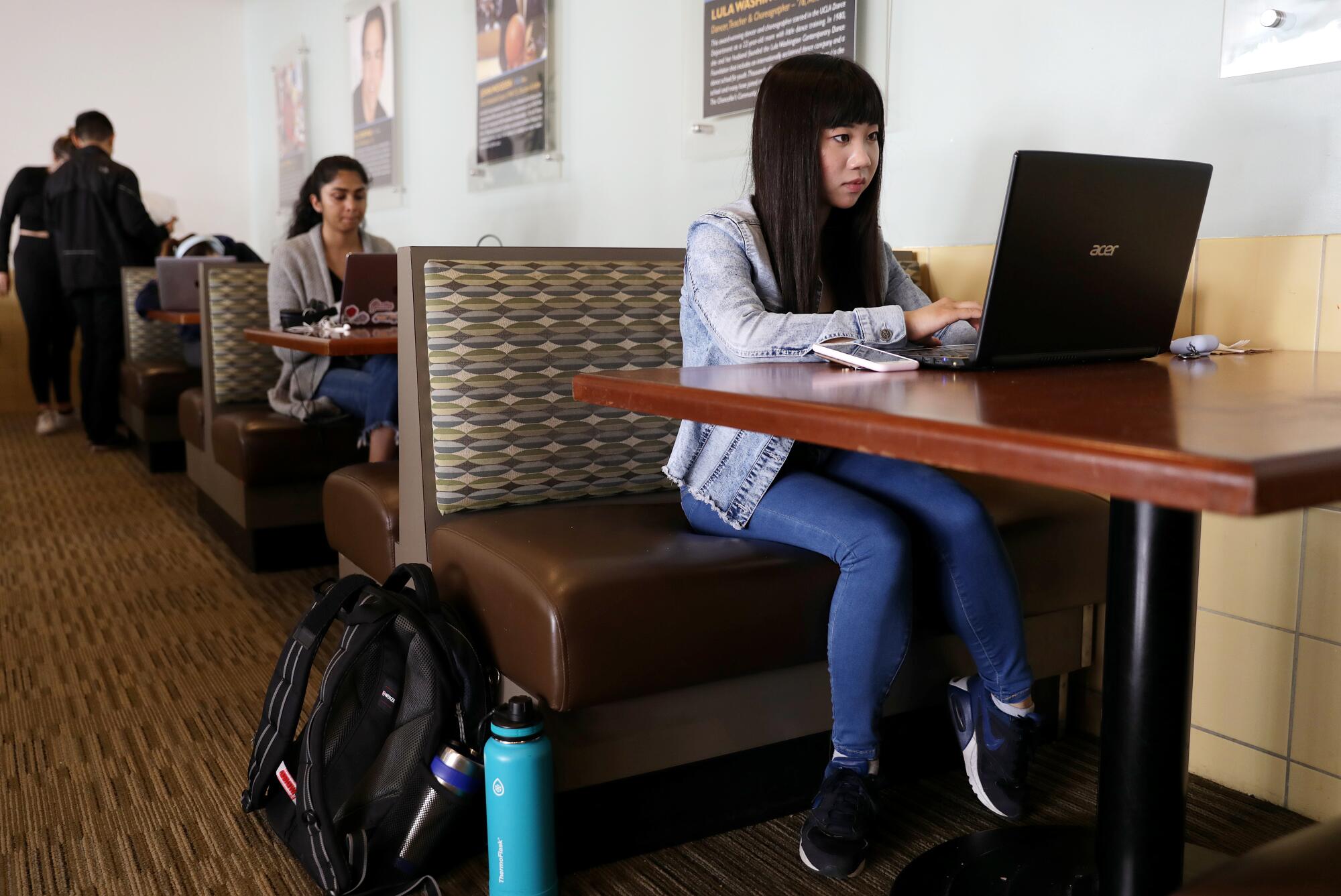
UCLA had a head start in its transition to nearly all remote classes this week, thanks to its online teaching and learning initiative launched in 2014 in cooperation with the University of California. The campus already had developed training and workshops for online instruction across disciplines and invested heavily in the technology to deliver it.
Since the contagion took hold, UCLA ramped up training sessions from a few times a week to every 20 minutes and expanded its capacity for classes via Zoom.
“We’ve taken the infrastructure we had in place and put it on steroids,” said Patricia A. Turner, vice provost of undergraduate education and senior dean of the College of Letters and Science.
On Wednesday afternoon, the normally bustling Westwood campus was eerily quiet. The signature Janss Steps were deserted, and Powell Library, a popular study spot, was quiet even by finals-week standards.
“This is as empty as I’ve ever seen it on any school day,” said student Kiera Laney, 20.
Scores packed the Bruin Cafe, however, where as many as four students attending different online classes could be found crammed around each small table.
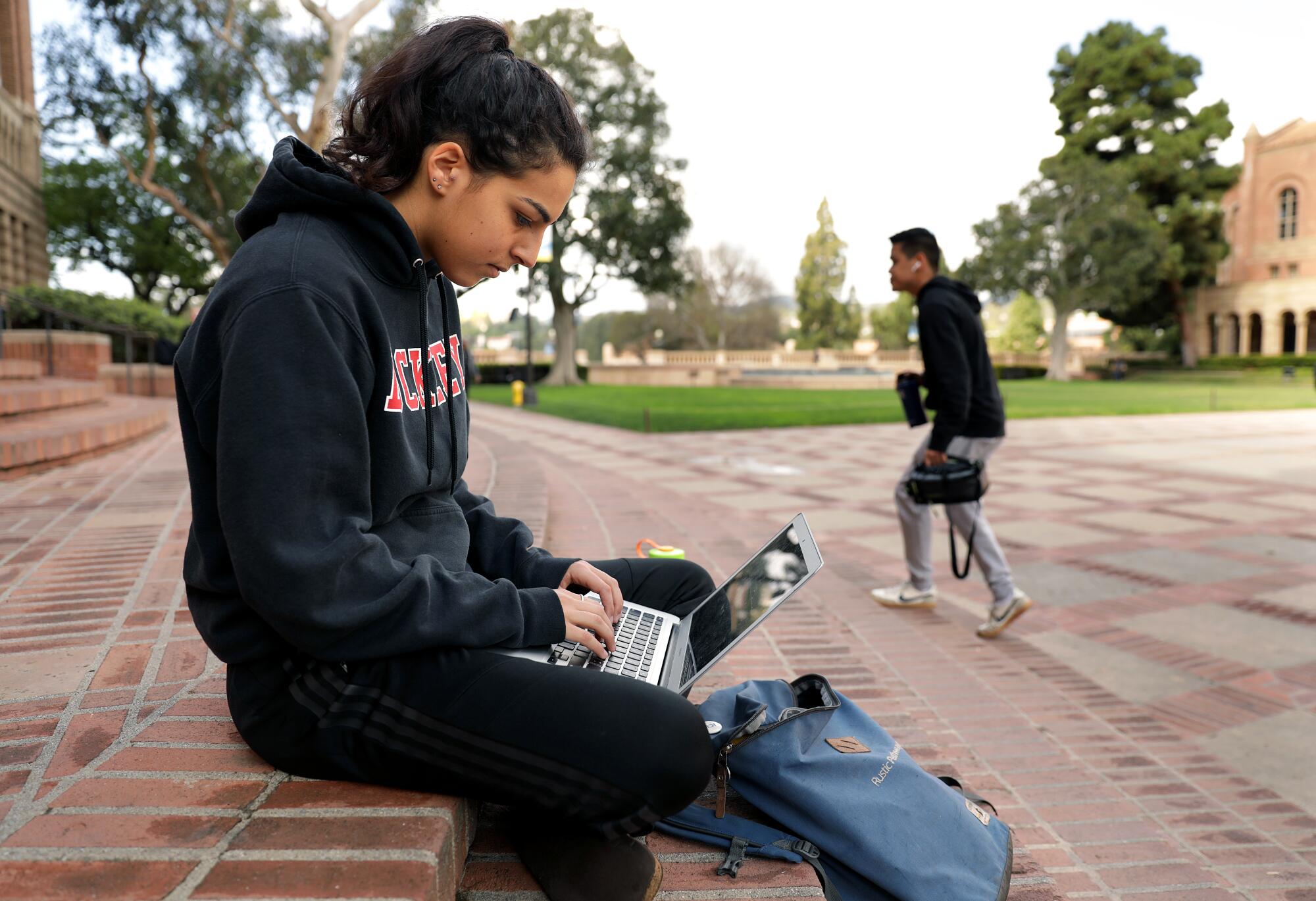
Shaya Naimi, 19, was making the best of her online math and chemistry classes, though she said the vibe was less engaging. “It was definitely different,” she said. “I can tell my professors are doing their best, but you just can’t replicate being in person.”
For Aarushi Kapoor, a neuroscience major, the transition to online learning was easy enough — she got through two remote lectures via Zoom. “But everything else is up in the air,” she said.
She wasn’t sure how to take her finals. She was uncertain whether to attend an optional in-person class later that day. Even more pressing were financial questions as to whether she should stay on campus or go home to Bakersfield if all her classes would be online.
“I’m paying for housing and meals,” she said. “It’s very expensive as it is, and now that’s all going to waste.”
For UCLA student Navkaran Gurm, who is majoring in public affairs and economics, the shift to online learning has played out differently depending on the class. After learning of the university’s decision Tuesday to move classes online, his professor in a genetic engineering class handed everyone A’s on the final and canceled the last class of the quarter.
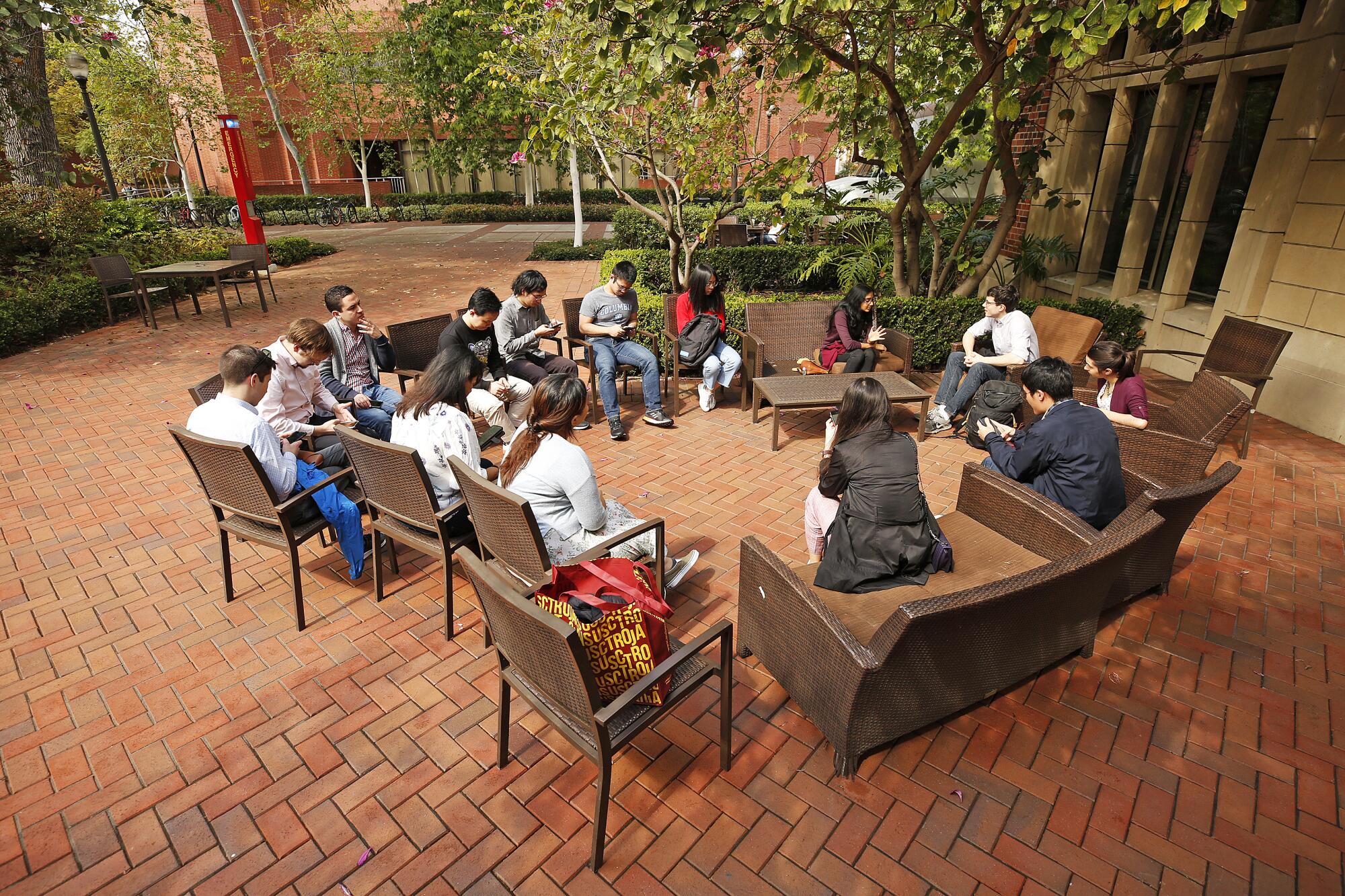
His economics professor canceled the last day of class scheduled for Thursday and planned an online final. That, however, caused Gurm to worry that some students might cheat.
“I’m a little bit concerned … that there’s potential for students to be able to get unfair advantages,” he said.
He also worried about whether he could access Wi-Fi that is strong enough from his home in rural Fresno, so he’s returning to campus after spring break.
At USC, students milled about, going to labs and eating together outside restaurants. The parking lots were nearly full.
Four freshmen, who sat chatting in front of the bookstore, said they had mixed feelings about the school’s decision to go to online classes.
“I like it a lot,” said Andrew Li, 19, a sophomore. “It’s a lot more convenient because you don’t have to go to class.”
But his friend Tiffany Yu, 19, said it felt “like such a waste of tuition. It’s so much money to pay for classes online.”
Freshman Victor Fan, 18, said he had decided to return home to Taiwan until classes resume. He planned to leave Friday.
“It doesn’t make sense for me to stay here when there’s nothing going on on campus,” Fan said. Plus, he added: “It’s safer…. I trust Taiwan more than here. We have good healthcare.”
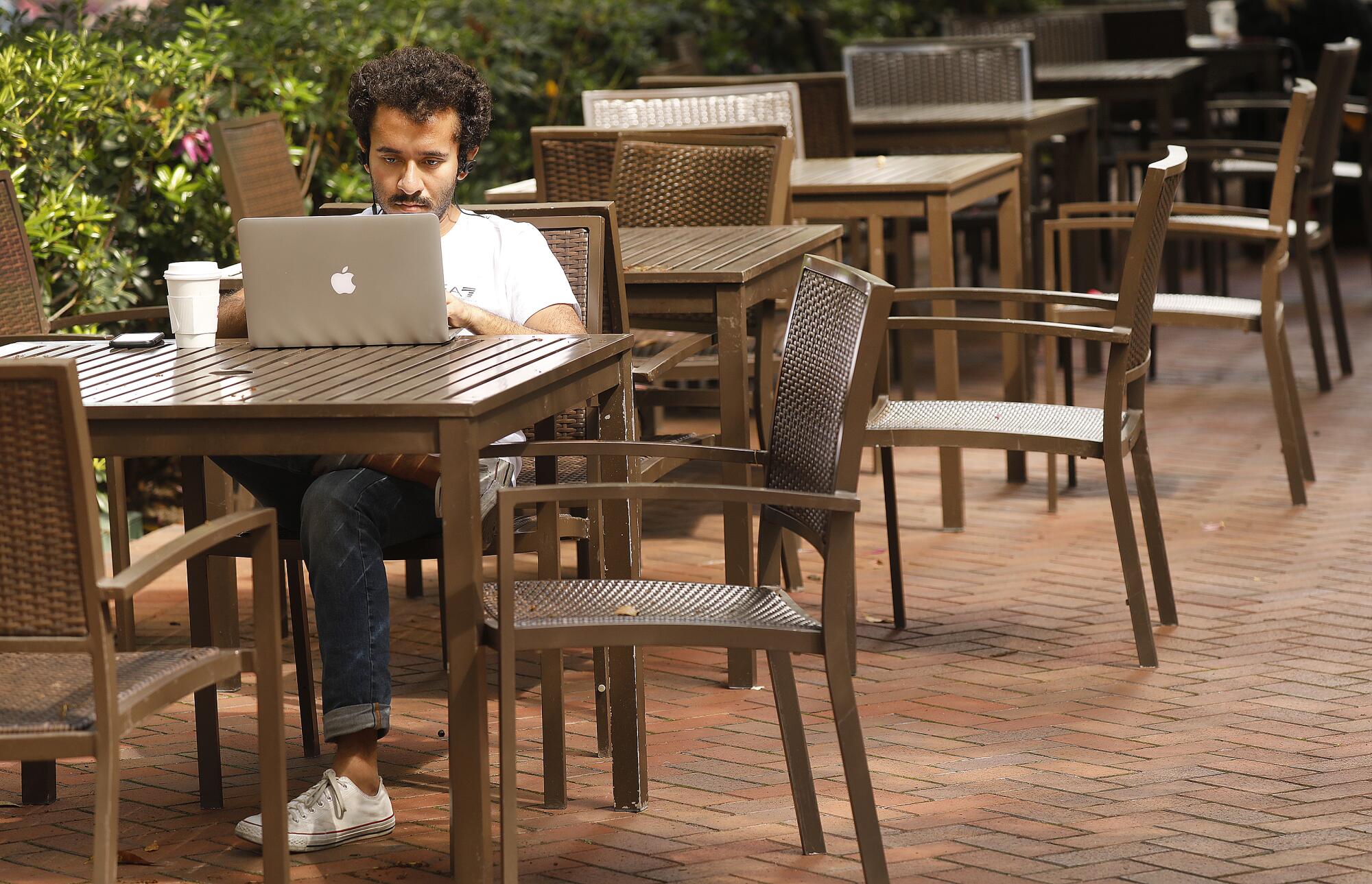
Fares Maimani, 25, a graduate student studying mechanical engineering, sat at a table outside, working on his computer and sipping coffee.
For him, and many other students, the shift to online classes at USC was not much of a change. In his program, the vast majority of lectures have been accessible online for some time, so he’s used to watching remote classes, he said.
Asked what was different, he looked around at the quiet campus.
“It’s more relaxing maybe,” he said.
But he was concerned about the possibility that the school would eventually cancel labs and research on campus. He is working on a robotics project that requires on-campus facilities.
“I can’t do much if I can’t come to campus,” he said. “I hope it doesn’t get to that point.”
For faculty, the shift to online teaching has been easier for some than others.
Alvin Huang, associate professor of architecture, taught his classes from his design firm’s downtown office overlooking Spring Street.
In the minutes before class started, Huang talked about his father, who lives in China, where people have been grappling with the new coronavirus for months. Anytime his father leaves his gated community and returns, someone takes his temperature before he is allowed to enter, Huang said.
At exactly 2 p.m., Huang logged on and greeted seven students who were supposed to present design projects they had been working on since last semester.
He waited to make sure each student could hear and be heard, and then told them that they should get used to online meetings — not just for classes but also for professional work in the future.
“This is maybe a format that is useful for you guys to get used to,” he said. “I’m constantly using it for projects.”
For Mary Andres, co-director of the Marriage and Family Therapy Program in the USC Rossier School of Education, the switch was trickier. Her course on couples counseling relies heavily on role-playing before classmates, who take notes on language and nonverbal signals.
She had to figure out how to retain that expressive classroom environment with an online course using a computer program that shows only the faces of her 20 students logged in from different locations. Andres came up with an idea to ask four students to create a video of themselves gathered in a small room, acting out their parts as the couple and two therapists.
She showed the video in class Wednesday and said she was relieved that the technology worked and student feedback was favorable. But remote learning, she said, “would never be my favorite.”
She was hopeful, though, that she and her class would adjust.
“We’re all going to figure it out together,” she said.
More to Read
Sign up for Essential California
The most important California stories and recommendations in your inbox every morning.
You may occasionally receive promotional content from the Los Angeles Times.
